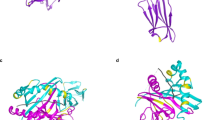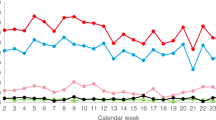Summary:
Registries and cord blood banks around the world collect and store the HLA types of volunteers in order to identify matched unrelated donors for patients requiring hematopoietic stem cell transplantation. This task is complicated by the many formats in which HLA types are provided by the testing laboratories (types obtained by serology vs by DNA-based methods; high vs intermediate vs low resolution) and by the need to identify which of these diverse types are most likely to match the HLA assignments of a searching patient as closely as possible. Conversion of the assignments to ‘search determinants’ may be included within the algorithm used to select and prioritize a list of potentially suitable donors, either as an aid to matching or as a tool to optimize the performance of comparisons within large data files. The strategies used by registries to create search determinants are described. A set of search determinants, utilized by the National Marrow Donor Program, is provided as an example and is intended to initiate further discussion aimed at understanding the process used by each registry with the possibility of developing a standard process among registries worldwide.
This is a preview of subscription content, access via your institution
Access options
Subscribe to this journal
Receive 12 print issues and online access
$259.00 per year
only $21.58 per issue
Buy this article
- Purchase on Springer Link
- Instant access to full article PDF
Prices may be subject to local taxes which are calculated during checkout
Similar content being viewed by others
References
Marsh SGE, Albert ED, Bodmer WF et al. Nomenclature for factors of the HLA system, 2002. Eur J Immunogenet 2002; 29: 463–515.
Oudshoorn M, van Leeuwen A, v.d.Zanden HG, Van Rood JJ . Bone marrow donors Worldwide: a successful exercise in international cooperation. Bone Marrow Transplant 1994; 14: 3–8.
Howe CW, Radde-Stepaniak T . Hematopoietic cell donor registries. In: Thomas ED, Blume KG, Forman SJ (eds). Hematopoietic Cell Transplantation. Blackwell Science Inc.: Malden, MA, 1999, pp 503–512.
Gahrton G, Van Rood JJ, Oudshoorn M . The World Marrow Donor Association (WMDA) – its goals and activities. Bone Marrow Transplant 2003; 32: 121–124.
Maiers M, Hurley CK, Perlee L et al. Maintaining updated DNA-based HLA assignments in the National Marrow Donor Program bone marrow registry. Rev Immunogenet 2001; 2: 449–460.
Helmberg W, Hegland J, Hurley CK et al. Going back to the roots: effective utilisation of HLA typing information for bone marrow registries requires full knowledge of the DNA sequences of the oligonucleotide reagents used in the testing. Tissue Antigens 2000; 56: 99–102.
Helmberg W, Lanzer G, Zahn R et al. Virtual DNA analysis – a new tool for combination and standardised evaluation of SSO, SSP and sequencing-based typing results. Tissue Antigens 1998; 51: 587–592.
Helmberg W, Zahn R, Keller E et al. Virtual DNA analysis as a platform for interlaboratory data exchange of HLA DNA typing results. Tissue Antigens 1999; 54: 379–385.
Flomenberg N, Baxter-Lowe LA, Confer DL et al. Impact of HLA-class I and class II high resolution matching on outcomes of unrelated donor BMT. Blood 2001; 98: 813a (abstract).
Anthony Nolan Bone Marrow Trust HLA Informatics Group. http://www.anthonynolan.org.uk/HIG.
National Marrow Donor Program. http://www.marrow.org, http://www.nmdpresearch.org.
Schreuder GMTh, Hurley CK, Marsh SGE et al. The HLA dictionary 2001: a summary of HLA-A, -B, -C, -DRB1/3/4/5, -DQB1 alleles and their association with serologically defined HLA-A, -B, -C, -DR, and -DQ antigens. Human Immunol 2001; 62: 826–849.
Maiers M, Schreuder GMT, Lau M et al. Use of a neural network to assign serologic specificities to HLA-A, -B and -DRB1 allelic products. Tissue Antigens 2003; 62: 21–47.
Hansen JA . Inclusive donor search. Tissue Antigens 1995; 46: 427–428.
Robinson J, Marsh SGE . The IMGT/HLA sequence database. Rev Immunogenet 2000; 2: 518–531.
Noreen HJ, Yu N, Setterholm M et al. Validation of DNA-based HLA-A and HLA-B testing of volunteers for a bone marrow registry through parallel testing with serology. Tissue Antigens 2001; 57: 221–229.
Zanone-Ramseier R, Gratwohl A, Gmür J et al. Sequencing of two HLA-A blank alleles: implications in unrelated bone marrow donor matching. Transplantation 1999; 67: 1336–1341.
Pimtanothai N, Rizzuto GA, Slack R et al. Diversity of alleles encoding HLA-B40: relative frequencies in United States populations and description of five novel alleles. Human Immunol 2000; 61: 808–815.
Rodey GE, Fuller TC . Public epitopes and the antigenic structure of the HLA molecules. Crit Rev Immunol 1987; 7: 229–267.
Anasetti C . Hematopoietic cell transplantation from HLA partially matched related donors. In: Thomas ED, Blume KG, Forman SJ (eds). Hematopoietic Cell Transplantation. Blackwell Science: Malden, MA, 1999, pp 904–914.
Wade JA, Hurley CK, Takemoto SK et al. HLA mismatching within or outside of cross reactive groups (CREG) is associated with similar outcomes after unrelated donor bone marrow transplant. Blood, (accepted).
Lau M, Park MS, Terasaki PI . International cell exchange 1974–1996, a 23-year documentation. In: Terasaki PI, Gjertson DW (eds). HLA 1997. UCLA Tissue Typing Laboratory: Los Angeles, CA, 1997, pp 85–124.
Pollack MS, Helman SW . Molecular HLA class I typing for UNOS laboratories. ASHI Quart 2002; 26: 103–105.
Hansen JA, Yamamoto K, Petersdorf E, Sasazuki T . The role of HLA matching in hematopoietic cell transplantation. Rev Immunogenet 1999; 1: 359–373.
Petersdorf EW, Kollman C, Hurley CK et al. Effect of HLA class II gene disparity on clinical outcome in unrelated donor hematopoietic cell transplantation for CML: The US National Marrow Donor Program experience. Blood 2001; 98: 2922–2929.
Petersdorf EW, Hansen JA, Martin PJ et al. Major-histocompatibility-complex class I alleles and antigens in hematopoietic-cell transplantation. N Engl J Med 2001; 345: 1794–1800.
Petersdorf EW, Gooley TA, Anasetti C et al. Optimizing outcome after unrelated marrow transplantation by comprehensive matching of HLA class I and II alleles in the donor and recipient. Blood 1998; 92: 3515–3520.
Morishima Y, Sasazuki T, Inoki H et al. The clinical significance of human leukocyte antigen (HLA) allele compatibility in patients receiving a marrow transplant from serologically HLA-A, HLA-B, and HLA-DR matched unrelated donors. Blood 2002; 99: 4200–4206.
Hurley CK, Wade JA, Oudshoorn M et al. A special report: histocompatibility testing guidelines for hematopoietic stem cell transplantation using volunteer donors. Hum Immunol 1999; 60: 347–360.
Hurley CK . Acquisition and use of DNA-based HLA typing data in bone marrow registries. Tissue Antigens 1997; 49: 323–328.
Acknowledgements
This research is supported, in part, by funding from the National Marrow Donor Program (NMDP), the Health Resources and Services Administration (#240-97-0036, NMDP), and the Office of Naval Research (N00014-00-1-0898, CKH). The views expressed in this article do not reflect the official policy or position of the Department of the Navy, the Department of Defense, or the US government.
Author information
Authors and Affiliations
Corresponding author
Additional information
Joint project of the National Marrow Donor Program (CK Hurley, M Setterholm, M Lau, MS Pollack, H Noreen, A Howard, M Fernandez-Vina, D Kukuruga, M Maiers), the World Marrow Donor Association (CK Hurley, CR Müller, M Venance, M Oudshoorn, C Raffoux), and NETCORD (J Enczmann, P Wernet)
Rights and permissions
About this article
Cite this article
Hurley, C., Setterholm, M., Lau, M. et al. Hematopoietic stem cell donor registry strategies for assigning search determinants and matching relationships. Bone Marrow Transplant 33, 443–450 (2004). https://doi.org/10.1038/sj.bmt.1704365
Received:
Accepted:
Published:
Issue Date:
DOI: https://doi.org/10.1038/sj.bmt.1704365
Keywords
This article is cited by
-
In silico analysis of HLA associations with drug-induced liver injury: use of a HLA-genotyped DNA archive from healthy volunteers
Genome Medicine (2012)
-
World Marrow Donor Association framework for the implementation of HLA matching programs in hematopoietic stem cell donor registries and cord blood banks
Bone Marrow Transplantation (2011)
-
HLA matching affects clinical outcome of adult patients undergoing haematopoietic SCT from unrelated donors: a study from the Gruppo Italiano Trapianto di Midollo Osseo and Italian Bone Marrow Donor Registry
Bone Marrow Transplantation (2009)
-
World Marrow Donor Association guidelines for use of HLA nomenclature and its validation in the data exchange among hematopoietic stem cell donor registries and cord blood banks
Bone Marrow Transplantation (2007)



